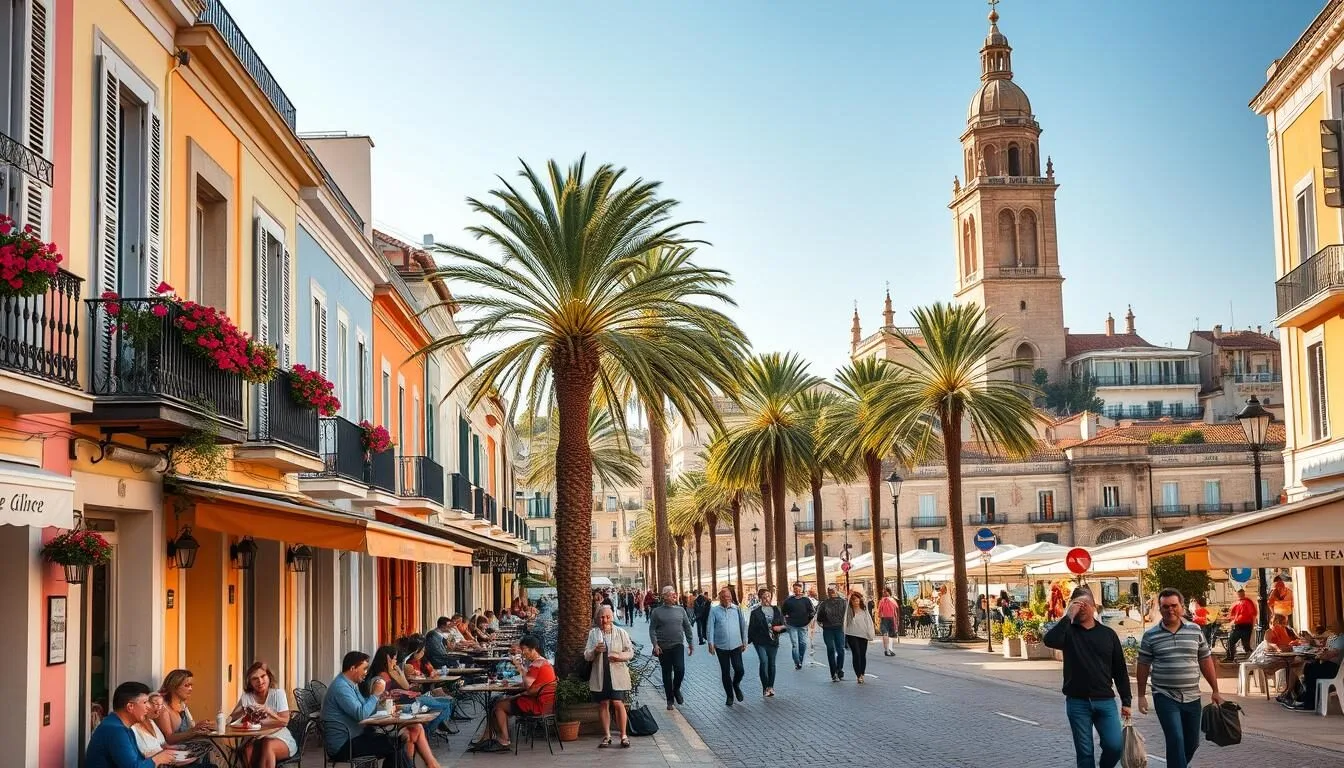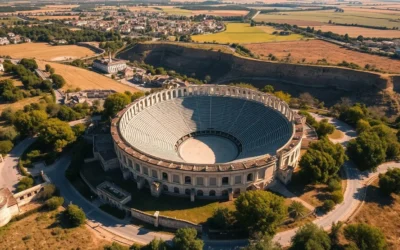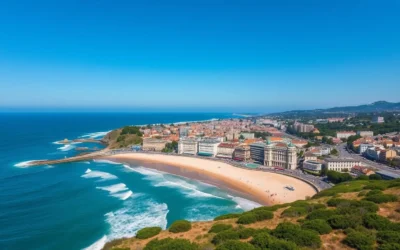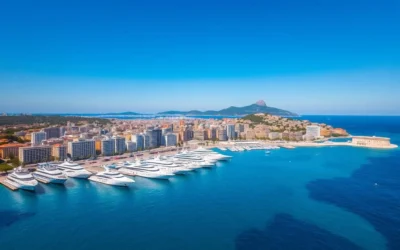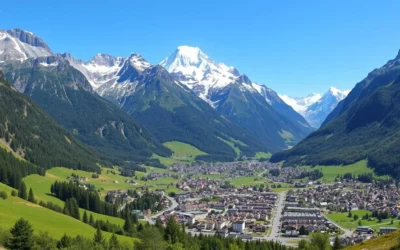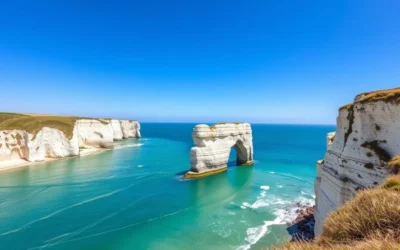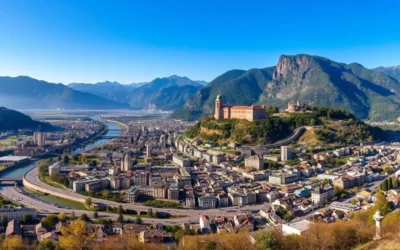✓ Accommodations✓ Flights✓ Rental Cars✓ Tours & Activities
Nestled between the Mediterranean Sea and the Pyrenees, Perpignan is a charming destination that offers a unique blend of French and Catalan cultures. You can experience the rich history and vibrant atmosphere of this underrated gem, making it an ideal getaway.
As you wander through the city’s streets, you’ll uncover a treasure trove of attractions, from the Palace of the Kings of Majorca to the charming Castillet. Savor the local cuisine, explore the city’s museums, and soak up the relaxed atmosphere that makes southern France so appealing.
With its authentic charm and diverse landscapes, Perpignan is perfect for travelers seeking a genuine experience without the crowds. You’ll enjoy exploring this hidden gem at your own pace, discovering the culture and history that make it so special.
Discovering Perpignan: A French-Catalan Gem
As you step into Perpignan, you’re immediately enveloped in a rich tapestry of French and Catalan cultures. This unique blend is evident in the city’s architecture, cuisine, and traditions. The city’s history is a complex narrative that spans centuries, with various periods of occupation and influence shaping its identity.
The Unique Cultural Blend of Perpignan
Perpignan’s cultural identity is a fascinating mix of its French and Catalan heritage. The city’s location near the Spanish border has contributed to its distinct cultural fusion. You can experience this blend in the local cuisine, which combines the flavors and ingredients of both cultures.
The city’s festivals and traditions also reflect its unique cultural identity. For example, the Trobades Médiévales festival celebrates Perpignan’s medieval past with reenactments, music, and crafts. This event is a testament to the city’s rich history and its ability to preserve its cultural heritage.
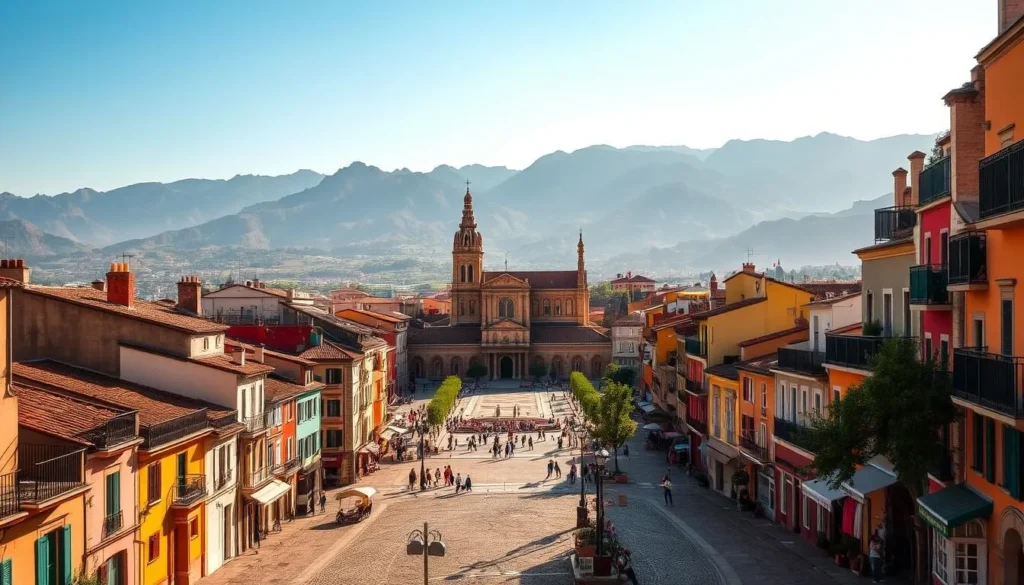
Brief History of the City
Perpignan’s history dates back to the Roman era, when the area was occupied by the ancient Romans. The city became a significant town in the Middle Ages and was the capital of the Roussillon region. In the 13th century, Perpignan became the capital of the Kingdom of Majorca, a period that left a lasting impact on its architecture and cultural identity.
The city’s strategic location made it a prized possession, and it changed hands between Spanish and French rule over the centuries. This complex history is still visible today in the city’s monuments, street layouts, and cultural traditions. As you explore the heart city, you’ll discover the many layers of its history.
Perpignan’s history is a story of resilience and adaptation, with the city evolving over time to become the vibrant, culturally rich destination it is today. Its location in the area near the Mediterranean Sea and the Pyrenees mountains has made it an important part of the region’s history and identity.
Palace of the Kings of Majorca
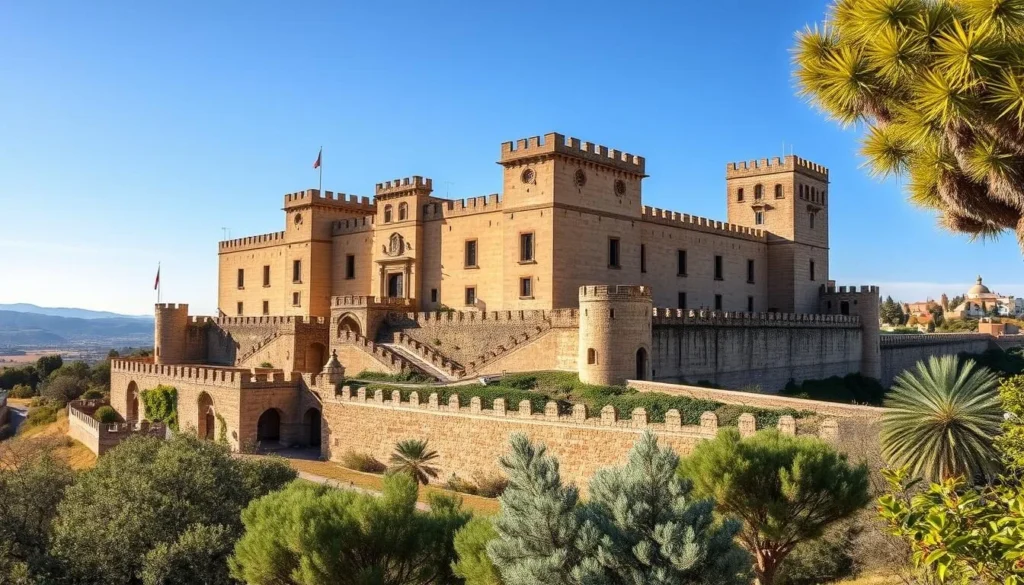
The Palace of the Kings of Majorca stands as a majestic monument in Perpignan, inviting visitors to explore its grandeur. This historical site is not only a testament to the city’s rich past but also a place where architecture, history, and natural beauty converge.
Historical Significance and Architecture
The Palace of the Kings of Majorca is a significant historical landmark that dates back to the 13th century. Its architecture is a blend of military fortification and royal residence, reflecting the strategic importance of Perpignan during that era. The palace’s design and construction were influenced by its role as a royal residence and a military stronghold. As you explore the palace, you’ll notice the intricate stonework, the imposing walls, and the well-preserved structures that have withstood the test of time.
The historical significance of the palace is deeply intertwined with the history of Perpignan and the region of Roussillon. It served as a key location for the kings of Majorca, who ruled over the area. Today, it stands as a reminder of the region’s complex past and its cultural heritage.
What to See Inside the Palace
Upon entering the palace, you’re greeted by the grandeur of the interior spaces. The palace houses various exhibitions and artifacts that tell the story of its history and the people who lived there. You can explore the royal apartments, the chapel, and other areas that have been preserved or restored to their former glory. The palace also hosts cultural events and exhibitions, making it a vibrant part of Perpignan’s cultural scene.
As you wander through the palace, take note of the architectural details, the historical artifacts on display, and the insights into the lives of the people who once inhabited this magnificent structure.
Panoramic Views and Gardens
One of the highlights of visiting the Palace of the Kings of Majorca is the opportunity to enjoy panoramic views of Perpignan and the surrounding landscape. From the ramparts, you can see the city, the plains, and on clear days, even the Pyrenees mountains. The gardens, filled with Mediterranean plants, offer a serene atmosphere and a chance to relax while taking in the view of the area.
Visiting during the golden hour before sunset is highly recommended, as the warm light enhances the beauty of the scene. Whether you’re looking for a great spot for photography or simply a moment to appreciate the beauty of Perpignan, the palace’s viewpoints are not to be missed.
The Castillet and Casa Pairal Museum
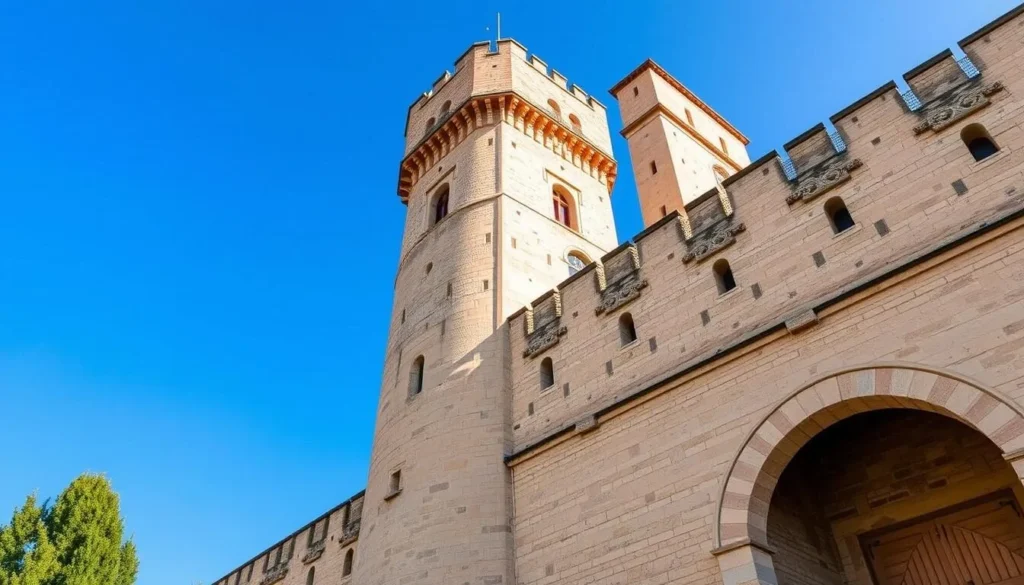
As you explore the heart of Perpignan, you’ll discover the historic Castillet, a medieval fortress turned museum that showcases the city’s rich Catalan heritage. This 14th-century structure has served as a fortress, a prison, and now, a museum, offering a unique glimpse into the city’s past.
History of the Medieval Fortress
The Castillet’s history dates back to the 14th century when it was constructed as a defensive fortress for the city. Over the centuries, it has undergone various transformations, serving as a prison during the 17th and 18th centuries. Today, it stands as a testament to Perpignan’s medieval past and its cultural significance.
The fortress’s architecture is a blend of medieval and Renaissance styles, reflecting the various periods of its construction and renovation. Visitors can explore the fortress’s walls and towers, gaining insight into the city’s historical defenses.
Exploring the Catalan Folk Arts Museum
Inside the Castillet, you’ll find the Casa Pairal Museum, dedicated to Catalan folk arts. The museum showcases a wide range of traditional Catalan crafts, including pottery, textiles, and woodcarvings. These exhibits provide a deeper understanding of the region’s cultural heritage and the daily lives of its people.
The museum’s collections are curated to highlight the rich traditions of Catalan folk arts, offering visitors a unique perspective on the region’s history and culture. By exploring the museum, you’ll gain a deeper appreciation for the craftsmanship and artistry that define Catalan culture.
Rooftop Views of the City
One of the highlights of visiting the Castillet is the panoramic view from its rooftop terrace. As you ascend to the top, you’ll be rewarded with breathtaking views of Perpignan, including the Cathedral of Saint-Jean-Baptiste, the Palace of the Kings of Majorca, and the winding streets of the old town. The view offers a different perspective on the city compared to other vantage points, such as the Palace of the Kings of Majorca.
The rooftop terrace is an ideal spot for photography, especially during the golden hour when the city is bathed in a warm, soft light. Visitors can also use this vantage point to orient themselves to the city’s layout before exploring the historic center on foot.
Head up to the rooftop terrace for panoramic views of Perpignan, and experience the city’s atmosphere from a new and exciting perspective. The rooftop access is included in the museum admission, making it an excellent value for visitors who want to combine cultural exploration with scenic views.
Cathedral Saint-Jean-Baptiste
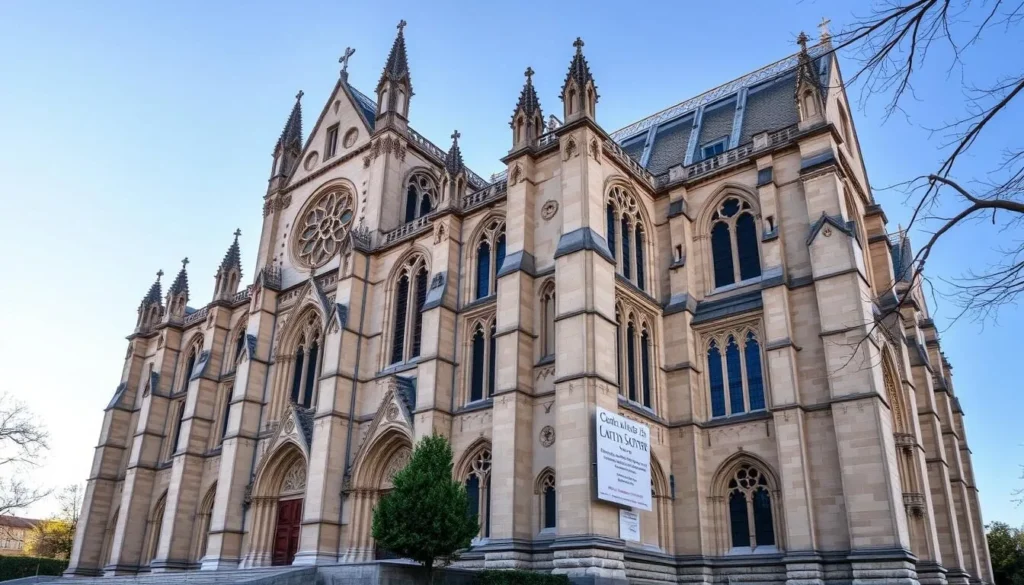
Perpignan’s Cathedral Saint-Jean-Baptiste is an architectural gem, blending Gothic grandeur with a serene atmosphere that invites contemplation and awe. As the heart of the city’s spiritual life, this magnificent cathedral has stood the test of time, its beauty and history captivating all who enter.
Gothic Architecture and Design Elements
The Cathedral Saint-Jean-Baptiste is a masterpiece of Gothic architecture, characterized by its soaring vaults, ribbed arches, and stunning stained-glass windows that filter the light and cast colorful patterns on the floor. The interior is a testament to the skill of medieval craftsmen, with intricate stone carvings and ornate details that adorn the walls and ceilings. As you explore the cathedral, notice the subtle nuances in its design, from the delicate carvings to the majestic proportions, all of which contribute to its breathtaking beauty.
The artistic treasures within the cathedral are equally impressive, featuring finely crafted altars, impressive sculptures, and other religious artifacts that showcase the region’s rich cultural heritage. The cathedral’s glass windows are particularly noteworthy, casting a kaleidoscope of colors across the interior and creating an atmosphere of reverence and contemplation.
The Great Organ and Interior Highlights
One of the cathedral’s most striking features is its magnificent Great Organ, a masterpiece of craftsmanship that dominates the space with its intricate woodwork and powerful sound. As you take a moment to appreciate the organ, notice the carved head with a movable jaw at the lower part of the organ case, a charming relic that, according to local stories, once dispensed candies to children during Christmas mass. This whimsical touch adds a layer of warmth and character to the sacred space.
As you explore the cathedral’s history and interior, be sure to visit at different times of day to experience how the changing light transforms the space, particularly when sunlight streams through the stained-glass windows. This dynamic interplay of light and color adds depth and complexity to the cathedral’s already rich atmosphere, making each visit a unique and unforgettable experience.
Campo Santo
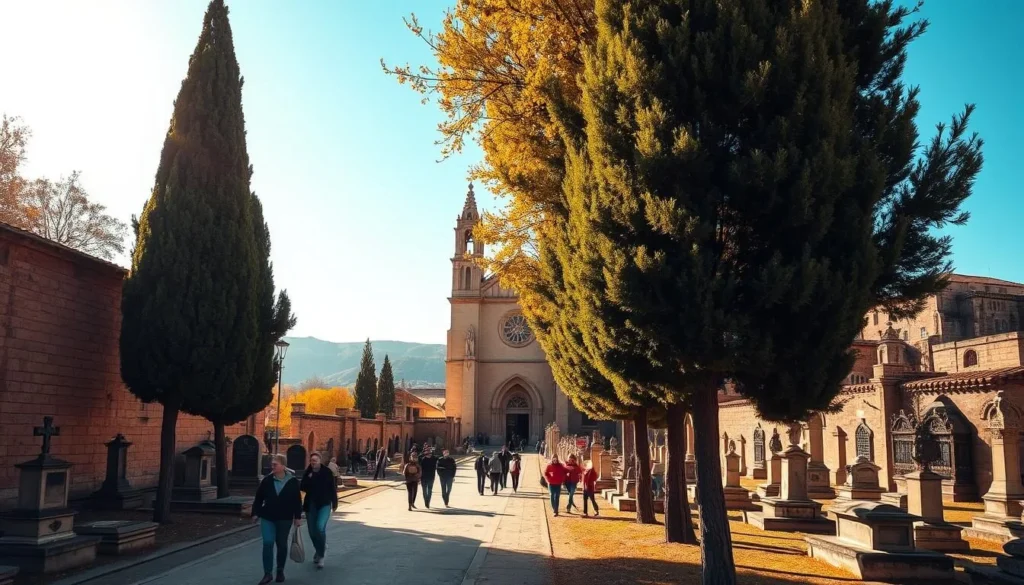
As you wander through the historic streets of Perpignan, you’ll discover the captivating Campo Santo, a site steeped in history and culture. This ancient Gothic cloister-cemetery has been beautifully repurposed, now serving as a vibrant venue for various cultural events and concerts.
The Cloister-Cemetery
The Campo Santo’s Gothic architecture is a marvel, with its serene cloister and historic tombs. The site’s unique atmosphere is palpable, making it an ideal location for cultural and artistic expressions. As you explore the cloister, you’ll be struck by the intricate stone carvings and the sense of history that pervades the air.
Cultural Events and Concerts
Campo Santo hosts a range of events, from classical music concerts to theater productions and cultural festivals. The cloister’s exceptional acoustics and atmospheric setting enhance the experience of attending a performance, making each event truly unforgettable. To find out about upcoming events during your visit, you can check local listings or visit the Perpignan tourist information center.
These cultural events not only celebrate the historical significance of Campo Santo but also showcase the vibrant contemporary culture of Perpignan. By attending an event here, you’ll experience the city’s rich cultural heritage in a unique and memorable way.
Musée d’Art Hyacinthe Rigaud
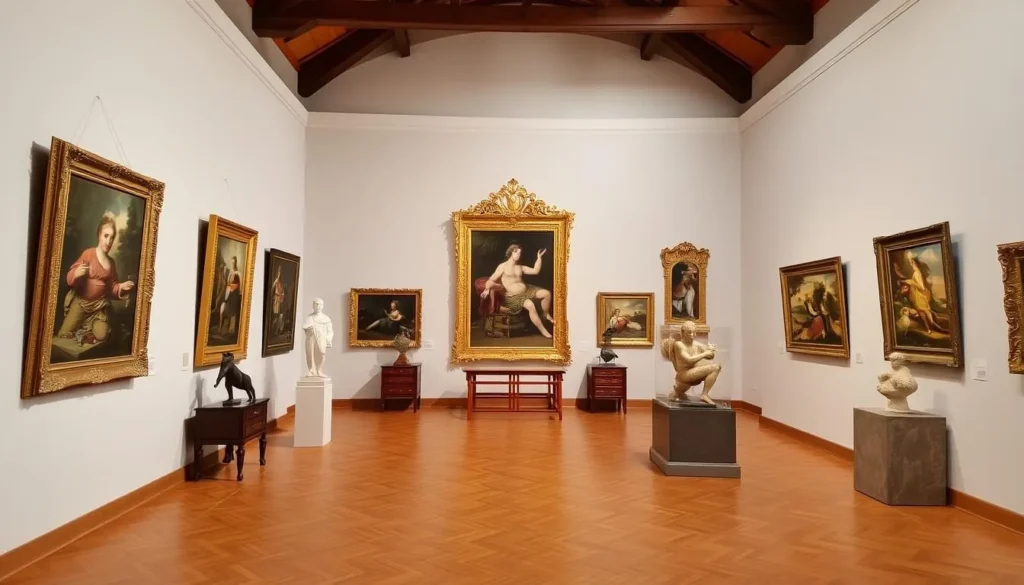
The Musée d’Art Hyacinthe Rigaud, named after the renowned artist Hyacinthe Rigaud, is a cultural gem in Perpignan. This museum is a must-visit for anyone interested in art, history, and the rich cultural heritage of the city.
The Museum’s Collections
The Musée d’Art Hyacinthe Rigaud boasts an impressive collection of artworks that span various periods and styles. You can explore an extensive array of pieces, including Baroque portraits by Hyacinthe Rigaud, which offer a glimpse into the artistic mastery of the era. The museum’s collections are not only a testament to the artistic talent of the past but also provide insight into the cultural and historical context of Perpignan.
As you wander through the galleries, you’ll discover a diverse range of artworks that highlight the city’s rich cultural heritage. The museum’s curatorial efforts ensure that each piece is presented in a way that is both informative and engaging, making for a truly enriching experience.
Picasso’s Connection to Perpignan
One of the highlights of the Musée d’Art Hyacinthe Rigaud is its documentation of Pablo Picasso’s connection to Perpignan. The museum features a fascinating collection of photographs that capture Picasso’s time in the city, offering a unique insight into his artistic development during this period. You can see how Perpignan’s landscapes, light, and cultural atmosphere inspired Picasso, leaving an indelible mark on his work.
The museum’s collection illustrates the significant role that Perpignan played in Picasso’s artistic journey, making it a fascinating destination for fans of the artist. Moreover, the museum’s charming garden, which Picasso frequently visited, provides a serene space for reflection after exploring the galleries.
Before you leave, be sure to visit the museum’s small but incredibly charming garden. It’s a peaceful oasis that adds to the overall visitor experience, much like Picasso found it during his frequent visits.
Casa Xanxo
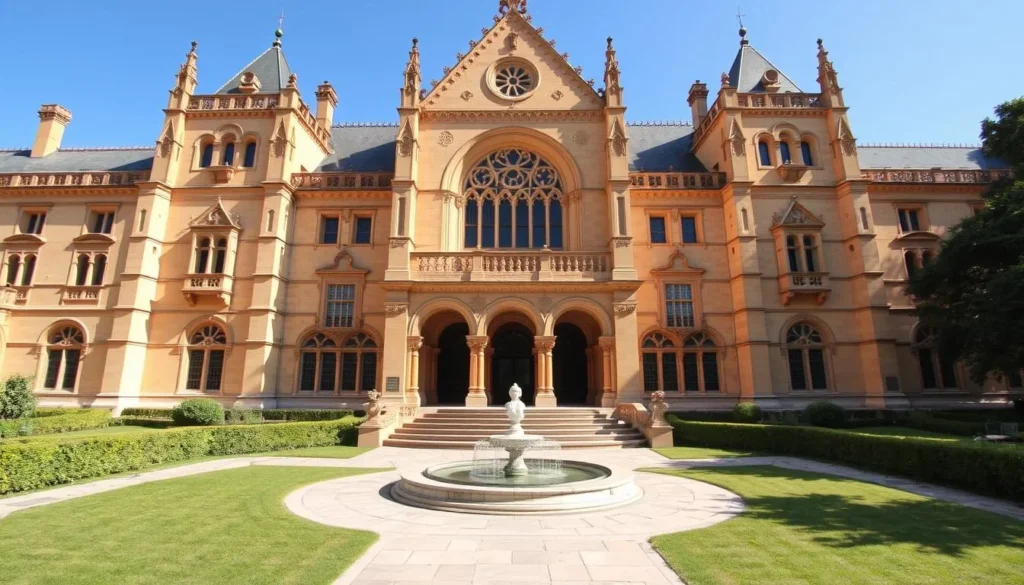
Casa Xanxo, a historical gem in Perpignan, offers a unique glimpse into the city’s architectural heritage. Today, it houses the CIAP (Centre for the Interpretation of Architecture and Heritage), a center dedicated to helping visitors understand Perpignan’s architectural evolution and cultural heritage.
Gothic Civil Architecture
The façade of Casa Xanxo features a frieze of enigmatic characters and animals, a hallmark of its Gothic origins. This Gothic civil architecture is a rare example of medieval building techniques and design elements that have been preserved over the centuries. As you explore the building, you’ll notice the intricate details that reflect the craftsmanship of the time.
The Centre for Interpretation of Architecture and Heritage
The CIAP within Casa Xanxo provides interactive exhibits and educational displays that illustrate Perpignan’s development from medieval times to the present. The center uses the historic building itself as an educational tool, pointing out architectural features that visitors can then identify throughout the city. This approach not only enhances the understanding of Perpignan’s history but also fosters a deeper appreciation for its cultural heritage.
Heritage preservation is crucial in Perpignan, and the CIAP plays a significant role in promoting public awareness and appreciation of the city’s architectural treasures. Visitors can benefit from guided tours, educational programs, and special exhibitions offered by the CIAP, which significantly enhance the visitor experience.
By exploring Casa Xanxo and the CIAP, you gain a deeper understanding of Perpignan’s rich culture and history, making it a must-visit destination for anyone interested in museum experiences and historical landmarks.
Hôtel Pams
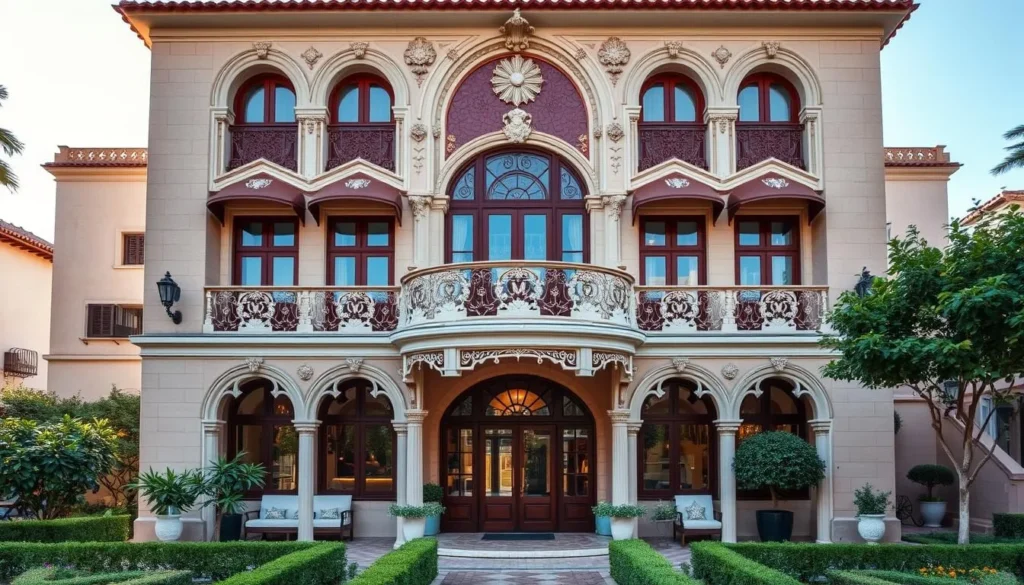
As you wander through Perpignan, a visit to Hôtel Pams is essential to experience the city’s unique blend of history and beauty. Today, the house belongs to the city of Perpignan, and the entry is free, making it an attractive destination for visitors of all budgets.
Art Nouveau Architecture
Hôtel Pams is renowned for its breathtaking Art Nouveau architecture, which creates a captivating atmosphere that transports visitors back in time. The building’s intricate design elements and ornate decorations are a testament to the luxury of the Belle Époque era. As you explore the premises, you’ll be struck by the interior beauty, with its ornate furnishings and ceiling paintings that showcase the craftsmanship of the period.
The Magnificent Staircase and Gardens
One of the highlights of Hôtel Pams is its magnificent iron-wrought staircase, which serves as the centerpiece of the building. The staircase’s intricate craftsmanship and theatrical design create a dramatic first impression. After climbing the stairs, you can wander through the ceremonial salons and explore the charming patio garden adorned with Art Nouveau galleries. The garden creates a peaceful oasis within the urban setting, offering a serene escape from the hustle and bustle of city life. During certain times of the year, such as Halloween, the building is decorated with themed decorations, adding a whimsical touch to the historical setting. When you visit Hôtel Pams, be sure to take a tour of the premises to fully appreciate its beauty.
Place de la Loge and Town Hall
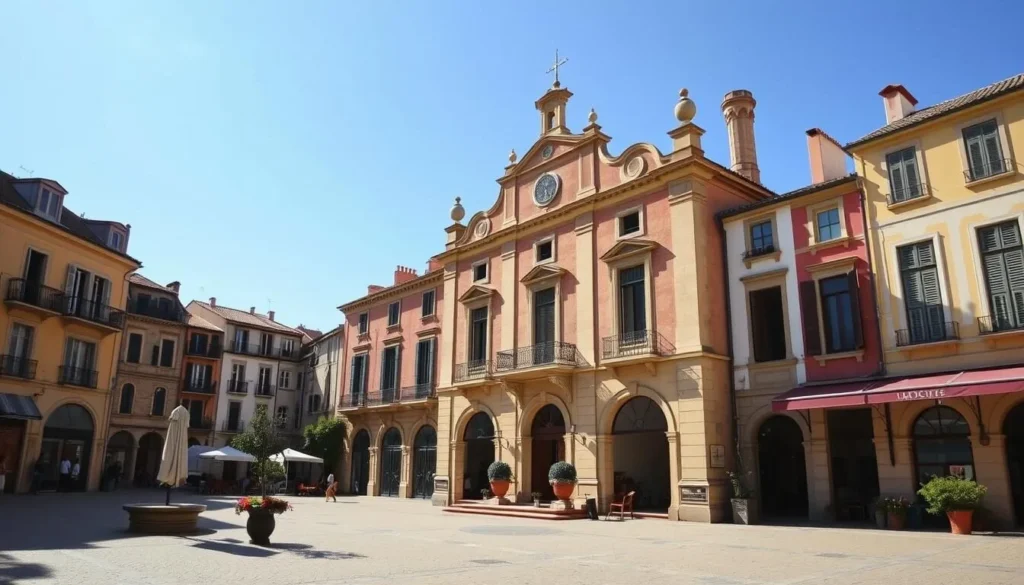
As you wander through the historic center of Perpignan, you’ll discover the charming Place de la Loge. This picturesque square is surrounded by beautiful architecture, including the impressive Town Hall, which was originally used as the Stock Exchange.
The Heart of Historic Perpignan
Place de la Loge has been the heart of Perpignan’s historic district for centuries. The square is surrounded by significant buildings, including the Town Hall, which boasts a unique pebbled façade made of river stones, exemplifying traditional Roussillon architecture. This distinctive feature makes the building stand out and showcases the region’s rich history.
The Town Hall’s Architectural Features
The Town Hall, or Hôtel de Ville, is a must-see attraction in Perpignan. Its building has evolved significantly over time, from serving as a Stock Exchange (Loge de Mer) to becoming the city’s administrative center. Visitors can admire the beautiful patio, which features one of Aristide Maillol’s masterpieces, “The Mediterranean.” This sculpture is not only a testament to Maillol’s artistic skill but also a representation of the region’s identity. The adjacent former Palace of the Deputation adds to the historic significance of the area, forming the civic center of Perpignan.
Culinary Experiences in Perpignan
Culinary enthusiasts will delight in Perpignan’s vibrant food scene, a fusion of Mediterranean flavors and traditional cuisine. The city’s culinary identity is shaped by its Catalan heritage and geographical location, offering a unique gastronomic experience.
Les Halles Vauban Food Market
Les Halles Vauban is a culinary hub where you can sample local delicacies and artisanal products. This bustling food market offers a variety of fresh produce, cheeses, and regional specialties.
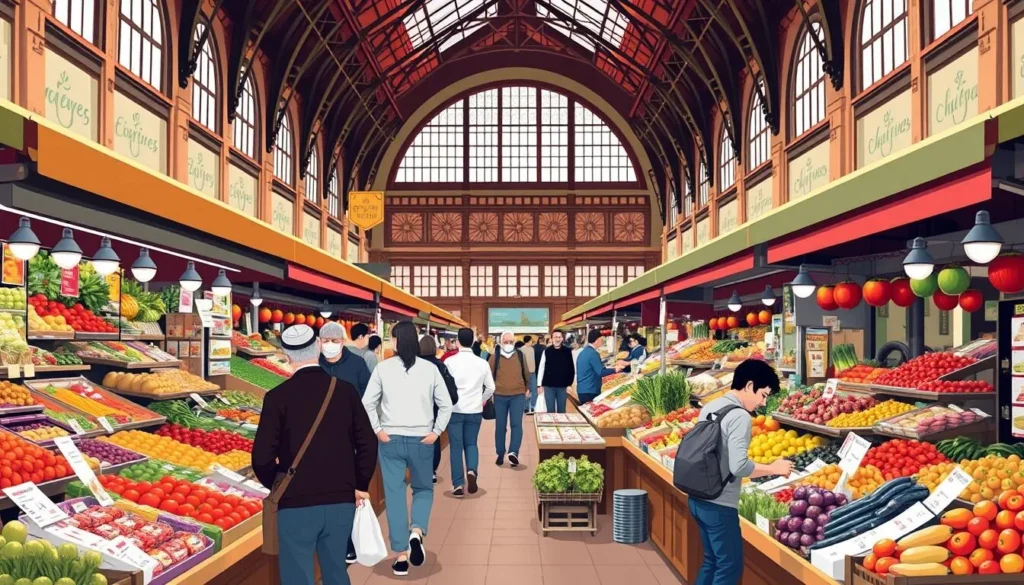
Top Restaurants in Perpignan
Perpignan is home to a range of excellent restaurants, each offering a unique dining experience. Here are some top recommendations:
Le17
Le17 is known for its contemporary take on traditional French cuisine, using locally sourced ingredients to create innovative dishes.
La Galinette
La Galinette offers a cozy dining atmosphere and a menu that highlights the best of Catalan cuisine, with dishes made from fresh, seasonal ingredients.
Le Grain de Folie
Le Grain de Folie stands out for its modern European cuisine, beautifully presented and offered at surprisingly reasonable prices. The restaurant’s commitment to quality and creativity ensures a sophisticated dining experience. The menu features innovative interpretations of traditional dishes, reflecting Perpignan’s cultural crossroads. The impeccable service adds to the overall dining experience, making guests feel welcomed and valued.
Parks and Gardens of Perpignan
From the tranquil Jardin des Plantes to the striking cactus garden at Square Bir Hakeim, Perpignan’s green spaces are a delight to explore. These areas not only provide a serene escape from the city’s hustle and bustle but also showcase the region’s unique flora and charm.
Jardin des Plantes
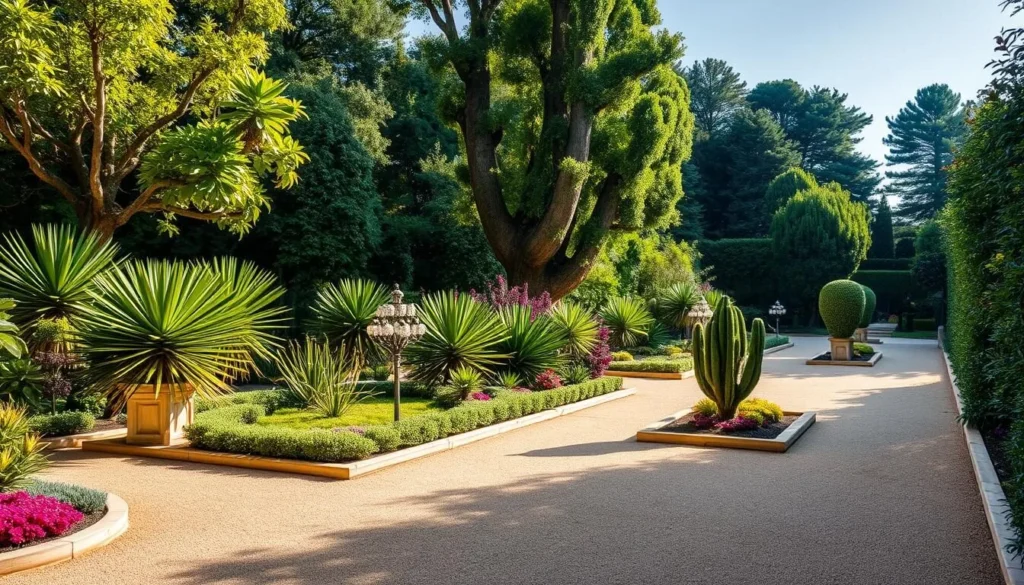
The Jardin des Plantes is a beautiful botanical garden in the heart of Perpignan. As you stroll through the garden, you’ll discover a wide variety of plant species, carefully curated and maintained. The garden’s tranquil atmosphere makes it an ideal place to relax and unwind.
Square Bir Hakeim and the Cactus Garden

If you’re looking for a more secluded walk, head down les Allées Maillol to the Square Bir Hakeim. This park is another of Perpignan’s green spaces, offering a different character with its shady paths. The standout feature here is the impressive cactus garden, which showcases a diverse collection of cacti, succulents, and drought-resistant plants from around the world. As you walk through the garden, you’ll be struck by the dramatic forms and textures of the sculptural plants, creating a unique visual contrast to the more traditional landscaping found elsewhere in the city.
Combining a visit to Square Bir Hakeim with a stroll along the adjacent Allées Maillol creates a pleasant walk that connects different parts of the city, allowing you to experience the full charm of Perpignan’s green spaces.
Perpignan, France: Best Things to Do – Top Picks for Day Trips
Discover the best day trips from Perpignan, France, and explore the rich cultural heritage and natural beauty of the surrounding region.
Collioure: The Picturesque Coastal Village
Collioure is a charming coastal village just a short drive from Perpignan. Known for its stunning beaches, picturesque harbor, and vibrant art scene, Collioure has been a favorite among artists and travelers alike.
Must-see attractions include the Church of Notre-Dame-des-Anges, with its striking blue dome, and the Fort Saint-Elme, which offers panoramic views of the Mediterranean.
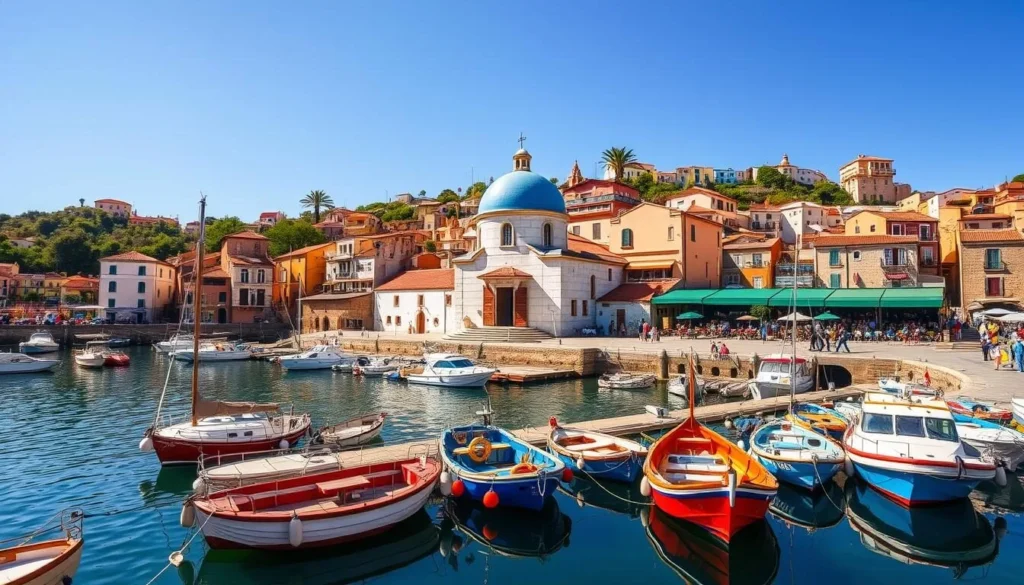
Exploring the Pyrenees Catalanes Regional Natural Park
Nature lovers will adore the Pyrenees Catalanes Regional Natural Park, located within easy reach of Perpignan. This park offers a diverse range of landscapes, from lush forests to rugged mountains.
Visitors can enjoy hiking, biking, and wildlife spotting in this unspoiled natural setting.

Forteresse de Salses
Just 15 kilometers north of Perpignan lies the imposing Forteresse de Salses, a 15th-century fortress that exemplifies transitional military architecture.
This massive structure, designed by Ferdinand of Aragon, features thick walls and intricate defense systems, making it a fascinating historical site to explore.
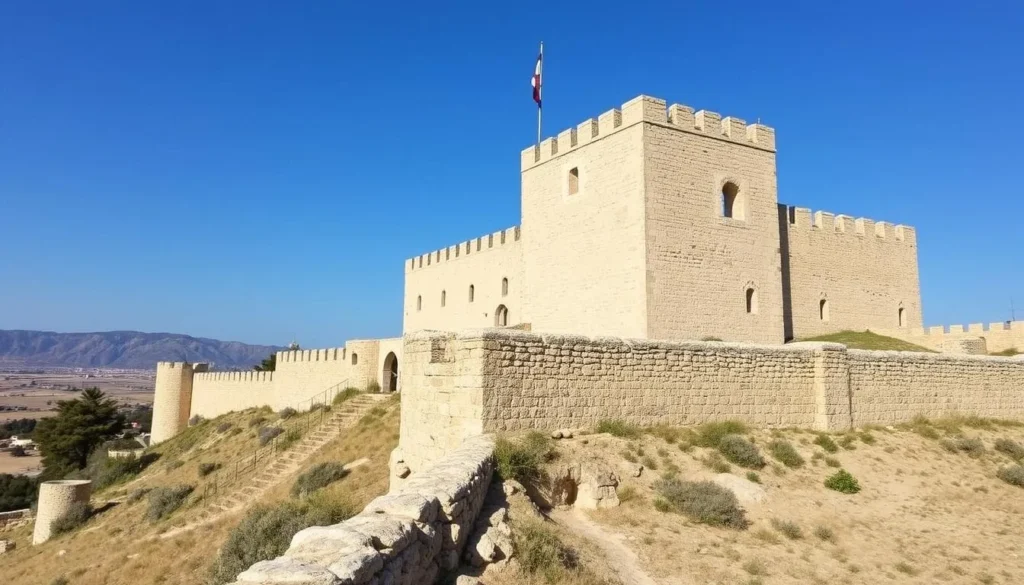
Shopping in Perpignan
Shopping in Perpignan is a delightful experience, with numerous boutiques and specialty stores to explore. As you wander through the historic center, you’ll discover a rich array of unique local products and souvenirs that reflect the region’s rich cultural heritage.
Boutique Shopping in the Historic Center
The historic center of Perpignan is a shopper’s paradise, offering a variety of boutique stores that sell everything from handmade crafts to gourmet food items. You can find beautifully crafted espadrille shoes, a traditional Catalan footwear that has become fashionable worldwide. Specialty stores like Épicerie Detal Sala offer an array of authentic local products, including Catalan spices, turrón (nougat), and rousquilles (ring-shaped cookies).

Catalan Souvenirs and Local Products
When it comes to souvenirs, Perpignan offers a range of unique items that make perfect mementos of your trip. You can pick up some traditional Catalan food products such as local honey, olive oils, and the region’s distinctive spice blends. The region is also renowned for its wine, particularly sweet Banyuls and Maury wine, making them excellent souvenirs. Whether you’re looking for something to savor or to bring back home, Perpignan’s shopping scene is sure to leave you with a memorable experience.
Seasonal Events and Festivals
Visitors to Perpignan can experience the city’s dynamic atmosphere through its diverse range of seasonal events and festivals. These events not only showcase the city’s rich cultural heritage but also offer a unique experience for visitors.
Visa Pour L’Image: International Photojournalism Festival
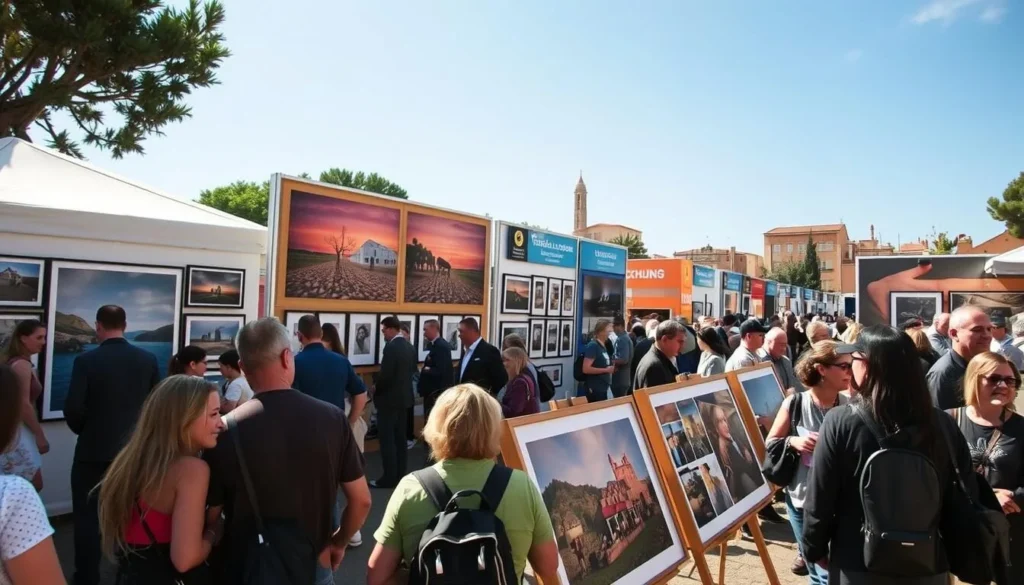
One of the highlights of Perpignan’s events calendar is the Visa Pour L’Image international photojournalism festival. This prestigious event attracts photography enthusiasts and professionals alike, featuring exhibitions, workshops, and conferences that celebrate the art of photojournalism.
Trobades Médiévales and Other Cultural Celebrations
Perpignan is also known for its Trobades Médiévales, a medieval festival that transports visitors back in time with its reenactments, crafts, and traditional food. Other cultural celebrations throughout the year include various festivals that showcase the city’s Catalan heritage and French influences, creating a lively atmosphere that is quintessentially Perpignan.
Christmas Market and Winter Events
During the winter months, Perpignan’s city center is transformed into a festive hub with its charming Christmas Market, or Marché de Noël. Visitors can enjoy handcrafted gifts, seasonal treats like mulled wine and roasted chestnuts, and traditional Catalan Christmas sweets, all while soaking in the warm and festive atmosphere. The city’s mild Mediterranean winter weather makes it an ideal time to visit, with fewer tourists and a range of special events that enhance the overall experience.
In conclusion, Perpignan’s seasonal events and festivals offer a unique blend of culture, food, and wine, creating an unforgettable experience for visitors. Whether you’re interested in photography, medieval history, or simply enjoying local cuisine, Perpignan has something to offer throughout the year.
Practical Information for Visitors
Perpignan, a gem in the south of France, awaits your visit, and being informed is key to a great experience. As you plan your trip to this beautiful city, having the right practical information can make all the difference in enjoying your stay.
Best Time to Visit Perpignan
The best time to visit Perpignan is during the spring (April-May) and autumn (September-October), when the weather is mild and pleasant, making it ideal for exploring the city’s historic sites and enjoying the outdoors. Summer can be quite warm, but it’s also the peak tourist season, with various cultural events and festivals taking place. Winters are generally mild, making it a good time to visit if you prefer fewer tourists and lower prices for accommodation.
Getting Around the City
Perpignan is relatively compact, making it easy to explore on foot. The city’s historic center is pedestrian-friendly, allowing you to discover its charm at a leisurely pace. For longer distances or to explore the surrounding area, Perpignan has an efficient public transportation system, including buses. You can also opt for bike rentals, providing a fun and environmentally friendly way to get around.
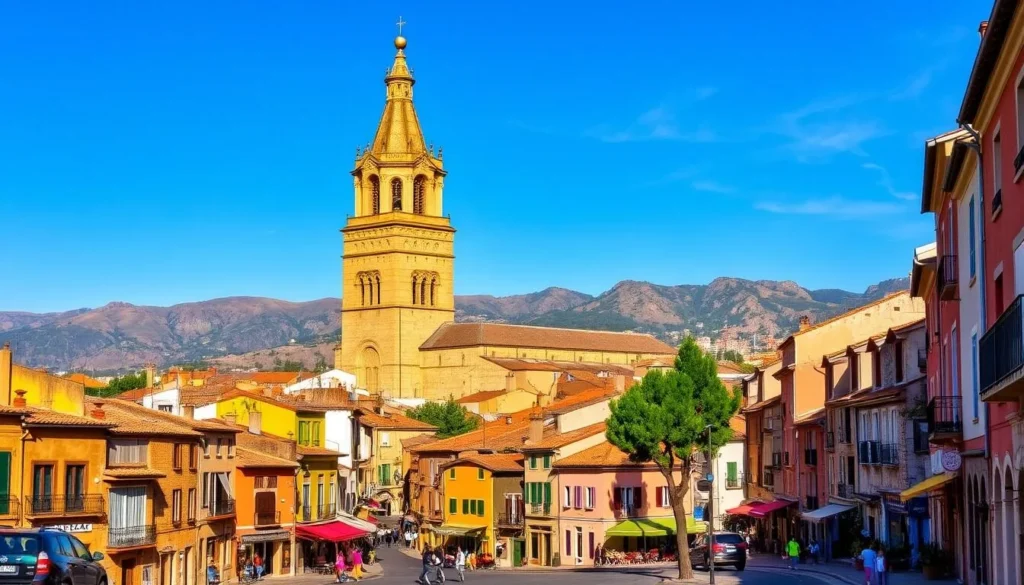
Where to Stay in Perpignan
Choosing the right place to stay in Perpignan can significantly enhance your visit. The city offers a variety of accommodation options to suit different preferences and budgets.
City Centre Accommodations
Staying in the city centre puts you at the heart of Perpignan’s historic and cultural life. You’ll be within walking distance to major attractions like the Palace of the Kings of Majorca and the Cathedral Saint-Jean-Baptiste. Many hotels and boutique accommodations are available, offering a range of experiences from luxury to budget-friendly options.
Saint-Jacques District Options
The Saint-Jacques district is another popular area to stay, known for its vibrant atmosphere and proximity to the city centre. It offers a mix of accommodation types, including boutique hotels and apartments, often with a more local, authentic feel.
Near the Train Station
For those arriving by train, staying near the Gare de Perpignan (Train Station) is highly convenient. This area is well-connected to the city centre by public transport and offers a variety of mid-range hotels. Staying here is ideal for travelers planning to use rail transportation for day trips to nearby destinations like Collioure, Narbonne, or even Barcelona. The neighborhood surrounding the station is a mix of Belle Époque buildings and modern developments, providing a blend of character and contemporary comfort. The convenience of being near the train station eliminates the need for taxi transfers with luggage, making the start and end of your trip smoother.
By considering these practical aspects, you can plan a more enjoyable and stress-free visit to Perpignan, making the most of your time in this beautiful French city.
Conclusion: The Underrated Charm of Perpignan
As you explore Perpignan, you’ll find that this underrated gem is filled with hidden treasures and unexpected delights. The city’s unique blend of French and Catalan influences creates an atmosphere that is both authentic and unforgettable.
Perpignan’s rich history and cultural heritage are evident in its stunning architecture, from medieval monuments to Art Nouveau masterpieces. As you wander through the charming streets, you’ll discover a destination that offers a genuine experience, far from the crowds of more popular tourist spots.
The city’s vibrant food scene is another highlight, with numerous restaurants serving local cuisine and offering the chance to savor a glass of French wine. Whether you’re exploring the historic center, relaxing in Mediterranean gardens, or enjoying the local culture, Perpignan is a place that will make your trip truly special.
Consider Perpignan not just as a day trip, but as a base for exploring the wider region. With its perfect position between mountains and sea, it offers countless opportunities for adventure and discovery. You’ll enjoy strolling through the narrow alleys, dotted with little shops and cafes, or watching the sunset over the green banks of the Basse River, all without the crowds, allowing you to truly relish the local vibe.
In summary, Perpignan is an underrated gem in Southern France that offers authentic experiences, a rich tapestry of culture, and diverse attractions, making it an ideal destination for travelers seeking a unique and memorable experience.
The above is subject to change.
Check back often to TRAVEL.COM for the latest travel tips and deals.
